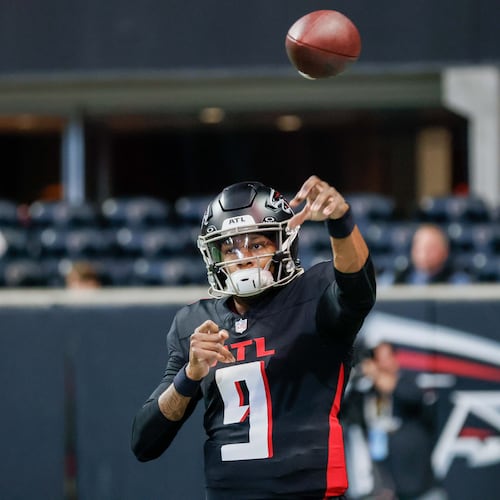The NFL has come a long way since the Dallas Cowboys first used computers to aid in the selection of players in the 1960s.
Former Dallas executive Tex Schramm worked the 1960 Winter Olympics in Squaw Valley, California and was impressed with how the IBM computers cranked out the results so fast.
He wondered if the team could somehow input all of the data that their scouts were accumulating on players into a system that would aid them in drafting.
Fast forward 50-plus years, and the computer is mainstay of most football operations, and the rest of the league has long since caught up to the Cowboys.
Now, most teams on the cutting edge of the draft and data entry, are providing their football decision-makers with analytics to help supplement their decision-making when it comes to the NFL draft, which is set for Thursday through Saturday.
“Analytics is definitely the wave of the future, and I think a lot of teams are very interested in it,” Falcons general manager Thomas Dimitroff said. “It’s a supplement for making decisions in my mind. It’s never going to be ‘the’ answer.”
Several teams concur with Dimitroff’s assessment.
The Falcons, with 17 other NFL teams, participated in the MIT Sloan Sports Analytics conference in March in Boston.
With teams looking for an edge in personnel matters, they are turning to analyzing data to help them hopefully predict success in the NFL.
“I think if you take intelligent enough people who know how to use analytics, and they don’t overplay the importance of analytics, I think it can be very beneficial,” Dimitroff said. “It can be beneficial in bio-mechanical assessment when you are talking about evaluating players and acquiring players and how they move.
“It also can be used for a statistical analysis. It also could be used for a heart-rate monitoring analysis.”
Dimitroff served on a panel at the convention titled: “Monday Morning Quarterback: Coaching & In-Game Decision.”
Some of the teams represented at the conference included the St. Louis Rams, San Francisco 49ers and the Kansas City Chiefs.
On the football analytics panel, which included former Kansas City general manager Scott Pioli, they talked about the size, weight and speed ratio for former Alabama running back Mark Ingram and how the numbers indicated that the former Heisman Trophy winner would be too slow to be successful in the NFL.
He had an analytics red flag.
Ingram has yet to distinguish himself in the league after two seasons with New Orleans. He’s averaged 3.9 yards per carry on 278 attempts and scored 10 touchdowns.
“It’s something we’re heavily involved in and dealing with right now,” Jacksonville general manager David Caldwell said. “It’s just another part of the process — it can help us confirm some of the things we already know and can raise some red flags on some of the things we don’t know.”
NFL scouts are taught to believe want they see when assessing football skills.
“(Analytics) pretty much confirms what we’re seeing,” Caldwell said.
All NFL teams gather at the NFL scouting combine to collect all sorts of measurements of the prospects.
Pioli, when he was with the Patriots, said they ignored the small size of quarterback Kliff Kingsbury’s hands and picked him in the sixth round of the 2003 draft. Tom Brady has a big hand size, which allows him to throw the ball accurately in the cold weather.
Kingsbury bounced around the NFL before making final stops in NFL Europe and the Canadian Football League. He’s currently the head coach at his alma mater, Texas Tech.
Some teams have been slow to embrace the practice of using analytics.
“We always try to get an edge, but for the New York Giants, just old-fashioned scouting is what we hang our hat on,” New York Giants general manager Jerry Reese said. “We try to put the numbers in and see what the numbers say, but we put our eyes on players and see what our eyes say.”
Reese said the Giants, who have been successful under Reese using their more traditional approach to player evaluations, will acknowledge an analytics red flag.
“We don’t put our head in the sand and ignore what the numbers say as well,” Reese said. “We try to put it all together and come to a consensus on what we think players are and we depend on our scouts. Our scouts are really the unsung heroes of what we try to do in the National Football League.”
Dimitroff sees a connection between analyzing numbers and predicting on-field performance.
“Statistical analysis is very important when you’re assessing talent on the field — assessing those numbers when you’re coming into the draft, and how they might compare in the NFL,” Dimitroff said.
About the Author
Keep Reading
The Latest
Featured



